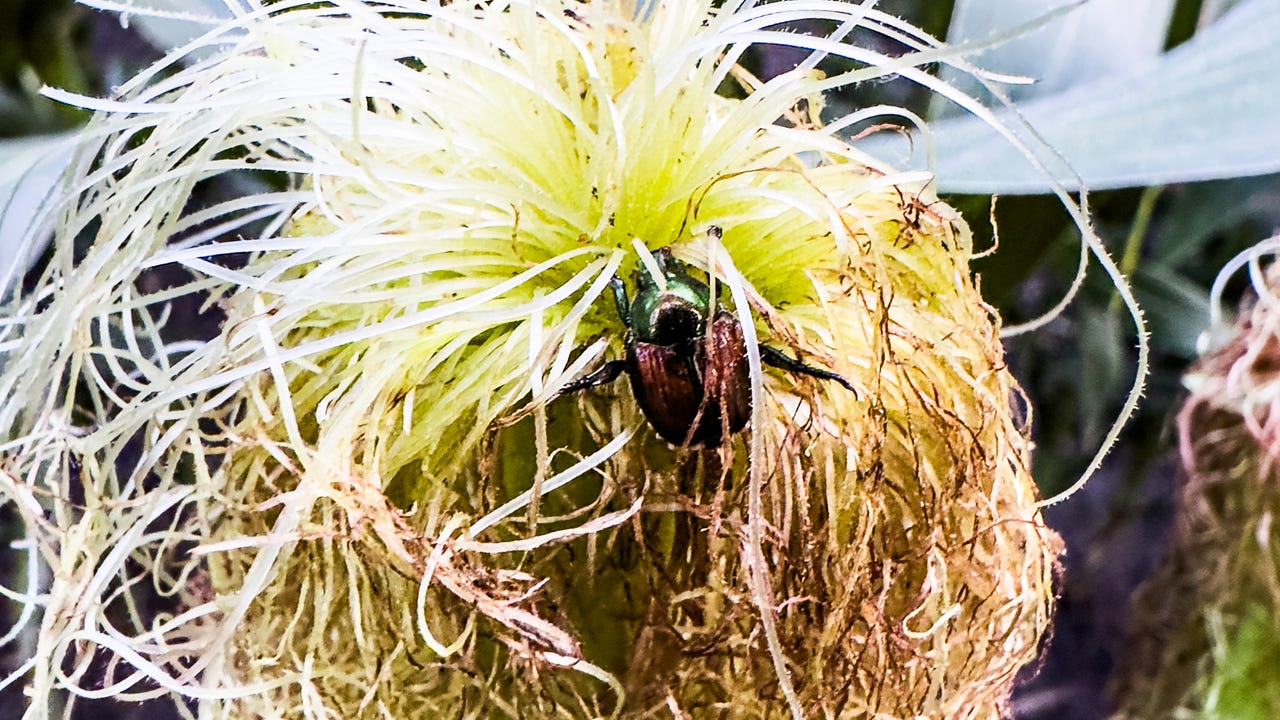If farmers could order ideal 85-degree F temperatures and sunshine at pollination, they’d do it.
Unfortunately, there’s little farmers can do at the time to ensure successful pollination. However, here are five steps farmers can take prior to pollination to help ensure corn ears brim with kernels at harvest.
1. Select hybrids that withstand stress. A generation ago, adverse weather would sometimes prompt hybrids to “miss the nick” and cause silking to misalign with pollen shed.
There’s good news on this front. “Corn breeders have done a good job of picking hybrids that tolerate stress and hit the pollination nick relatively well,” says Dean Grossnickle, technical development lead for Syngenta.
Longer-maturing hybrids can better withstand stressors — such as heat — better than earlier-maturing ones, adds Andrew Penney, Preceon agronomy lead for Bayer Crop Science. That’s due to their longer vegetative and reproductive growth.
It’s important to complement these late-maturing hybrids with short-maturing ones, Grossnickle says. Pollination-crippling 100-degree days sometimes come early, late or not at all during the growing season. If you knew if and when they would occur, you could dodge these days by planting date.
The point is, you don’t know. That’s why it makes sense to plant a mix of relative maturities to spread risk of adverse weather occurring during pollination, Grossnickle says.
“You can never outguess Mother Nature,” he adds.
2. Strive for “Even Steven” emergence. “Having an even stand really helps with pollinating,” says Austin Smuck, a Champion Seed agronomist. “You can get some good winds and pollen movement with even stands.”
Uneven stands create uneven silk emergence, pollen shedding and flow during pollination that may ultimately reduce yield potential, he adds.
Even stands begin at the year’s start, Smuck says.
“Planting makes your bed for the rest of the year,” he points out. “If you mud a crop in, you will be fighting that field all season. It really shows up once harvest starts and you see [reduced yield] on the yield monitor.”
Granted, a farmer who still has corn to plant on May 20 may need to plant in less-than-ideal soils. If it’s still early in the growing season, though, waiting for soils to dry pays dividends, Smuck says.
“Making sure all plants come up like a picket fence is ultimately the biggest driver of yield,” Grossnickle adds.
3. Pump populations for better pollination. More plants mean more pollen, which bodes well for pollination.
“Whether your soils have the ability to sustain that many plants is another question,” Grossnickle says.
Deep black soils oozing with organic matter may be able to sustain 40,000 plants per acre. However, planting at that rate may result in a sea of stressed plants in sandy soils that struggle to fill ears with kernels, Grossnickle points out.
“While having that many plants may produce more pollen, it’s not beneficial if you stress all the plants out,” he says.
 BEETLE BLITZ: Japanese beetles have emerged as silk clippers during pollination. For an insecticide application to pay off, though, three per plant clipping silks to less than 1 inch while pollination is ongoing must occur.
BEETLE BLITZ: Japanese beetles have emerged as silk clippers during pollination. For an insecticide application to pay off, though, three per plant clipping silks to less than 1 inch while pollination is ongoing must occur.
4. Fine-tune fertility. “Once we hit that pollination window, we cannot be starving that plant,” Grossnickle says.
Sidedressed nitrogen applications as early as V8 or around tassel (timing hinges on fall or spring N rates) can supplement earlier-applied N lost to leaching or denitrification, Penney says.
“We need nitrogen late in the growing season, through the reproductive stages,” he says. At R5 — a growth stage in which kernels are beginning to dent — 40% to 45% of a corn kernel’s dry matter still is accumulating, he adds.
“The more we do to ensure that we have nitrogen available for that plant later in the growing season, then the better off that crop will be,” Penney says.
5. Scout for silk clippers. Rootworm-resistant traits, crop rotation and soil-applied insecticides remain excellent tools for managing corn rootworm.
Still, cases exist — such as with corn-on-corn — where corn rootworm beetles overwhelm and feed on silks at pollination. “Japanese beetles can also clip silks,” Grossnickle says.
Scouting for silk clippers can spur farmers to apply insecticides during pollination. Iowa State University thresholds for insecticide treatment of Japanese beetles state that all three of the following criteria must be met:
- three or more beetles per ear
- silk clipping to less than 1 inch
- pollination is not yet complete
For corn rootworm beetle infestations, ISU thresholds for insecticide treatment state all three of the following criteria must be met:
- five or more beetles per ear (In fields with adequate moisture, the threshold can be increased to 15 beetles per ear.)
- silk clipping to less than 1 inch
- pollination is not yet complete